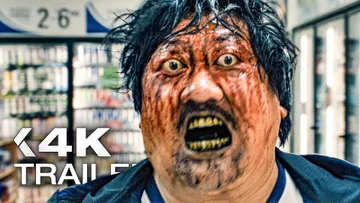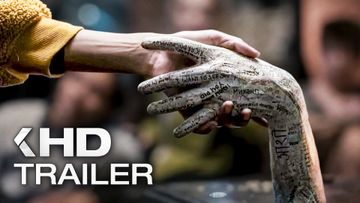Prequel to horror hit "Weapons" under discussion
The background to Aunt Glayds is to be examined
Zach Cregger's horror film "Weapons" is currently the talk of the town and is already a huge success at the box office. With a budget of just 30 million dollars, it has already grossed over 90 million dollars on its opening weekend. Now the universe is apparently to be expanded, as a prequel is currently being discussed.
As The Hollywood Reporter reports, the mysterious backstory of Aunt Gladys is to be explored in more detail. The original screenplay version of "Weapons" already included a chapter about the character, but was ultimately deleted. Now, however, this lost chapter could become the basis for a separate film.
However, there are no concrete plans for the prequel as yet. Cregger is currently very busy anyway: At the time of the "Weapons" premiere, he was in Prague to oversee the pre-production of his upcoming "Resident Evil" reboot. He is also currently writing the screenplay for the DC film "Henchman".

From niche project to cinema phenomenon – indie horror films that became huge successes
Horror films have always had a special place in cinema. They are often cheap to produce, give creative minds plenty of room for experimentation and – if everything goes right – can make huge profits on a small budget. The independent sector in particular has repeatedly produced surprise hits that have not only shone at the box office, but have also had a lasting impact on the genre.
Below, we take a look at some of the most impressive examples of small horror productions that mutated into global successes – proving that fear has a universal sales talent.
The Blair Witch Project (1999)
Few films epitomize the phenomenon of "indie horror success" as much as "The Blair Witch Project". With a production budget of just 60,000 US dollars, Daniel Myrick and Eduardo Sánchez made a film that relied primarily on allusions, improvised dialog and audience suggestion. The makers cleverly used the fledgling internet to spread the rumor that the film was based on real events – an early form of viral marketing. The result: "The Blair Witch Project" grossed almost 250 million dollars worldwide, established the "found footage" genre in the mainstream and inspired a whole wave of similarly staged films.
Paranormal Activity (2007)
Oren Peli's debut film was shot in his own home for around 15,000 dollars and was never originally intended for wide release. However, after the material made the rounds in Hollywood, Paramount Pictures recognized its potential. With a targeted theatrical release strategy – initially in just a few cities, then nationwide – "Paranormal Activity" became a phenomenon.
The special feature was not only the minimal use of effects, but also the clever use of "midnight screenings", in which audience reactions were filmed and used as advertising. In the end, the film grossed over 190 million dollars and established a lucrative horror series.

Get Out (2017)
Jordan Peele's directorial debut "Get Out" was more expensive than the typical low-budget hits with production costs of around 4.5 million dollars, but it was still considered a comparatively small project. The film mixed social thriller, satire and horror to create a highly political commentary on racism in the USA. The film not only performed well at the box office with box office takings of over 255 million dollars, but also received critical acclaim and even an Oscar for Best Original Screenplay – a rarity for horror films. "Get Out" showed that indie horror can not only be financially successful, but also artistically influential.

Hereditary: The Legacy (2018)
Ari Aster's debut film "Hereditary" was made under the umbrella of A24, a studio that specializes in unusual, often disturbing material. With a budget of around 10 million dollars, Aster created a psychological horror drama that was celebrated for its eerie atmosphere, unpredictable twists and brilliant performance by Toni Collette. The film grossed over 80 million dollars worldwide and immediately established Aster as one of the most interesting voices in modern horror cinema. Its success helped A24 become known as a brand for 'arthouse horror' in the mainstream.

A Quiet Place (2018)
Although "A Quiet Place" was distributed by Paramount, the original idea was a relatively small screenplay project by Bryan Woods and Scott Beck. John Krasinski took over the direction, acted in the film himself and shot the movie for around 17 million dollars – a medium budget that was far below the sums of typical studio blockbusters. The almost wordless production and the innovative concept of a world in which sounds are deadly struck a chord with audiences. "A Quiet Place" grossed over 340 million dollars worldwide and inspired a successful sequel.

Why indie horror in particular often takes off
The success of these films is no coincidence. Horror is one of the few genres that works independently of star power and expensive special effects. Atmosphere, creative ideas and playing with the audience's fears are much more important. In addition, horror films can often be shot in a small number of inexpensive locations, which keeps budgets low and minimizes risk.
Another factor is the passion of the filmmakers. Indie directors are often willing to test unusual narrative structures, break taboos or create new sub-genres – risks that big studios often avoid. If these experiments resonate with audiences, the rewards are all the greater.
The future: more courage, more diversity
With streaming services such as Netflix, Shudder and Amazon Prime, indie horror films now have more opportunities than ever to find their audience. At the same time, there is still the chance to achieve cult status through targeted theatrical releases. Films such as "Barbarian" (2022) or "Talk to Me" (2023) show that the formula for success is alive and well: small budgets, big ideas, clever marketing. The trend is likely to continue. Because as long as people like to be scared – and they have been doing so for centuries – filmmakers will succeed in generating huge emotions and equally huge revenues with modest means.
